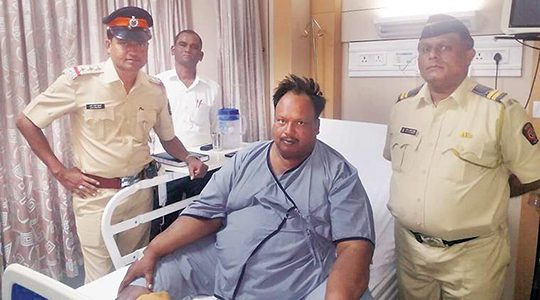Mumbai, Mar 3: With his weight receiving national limelight courtesy a tweet by columnist Shobhaa De, inspector Daulataram Jogawat underwent a surgery Thursday to reduce his weight. Jogawat, of the Madhya Pradesh Police, weighs 180 kg. He arrived in the city on February 26 for medical check-ups and agreed to a bariatric surgery at South Mumbai’s Saifee Hospital. Dr Muffazal Lakdawala, bariatric surgeon and chairman of the Institute of Minimal Access Surgical Sciences & Research Centre at Saifee Hospital, performed the surgery along with his team. “He will probably be discharged on Friday,” Lakdawala told.

Doctors have said the surgery will not cut all of Jogawat’s flab. The inspector is expected to lose at least 80 kg over the next 18 months without having to maintain any special diet.
De had tweeted Jogawat’s picture to mock the Mumbai Police’s “heavy bandobast” during the recent municipal elections, suggesting that the force needed to be healthier. While the Mumbai Police promptly pointed out that the man was not one of theirs, others noticed that the photo had been in circulation for the past three years, used to make a point about overweight policemen. The trail soon led to 57-year-old Jogawat, who is posted in Police Lines, Neemuch, in MP.
Originally from Rajasthan, Jogawat was born in Ratlam and joined the MP Police as a constable in 1979. Till the early 1990s, he said, he had been a fit man. But he started putting on weight after a gall bladder operation. The inspector also attributes his 180-kg weight to an insulin imbalance he suffers from.





Comments
Add new comment